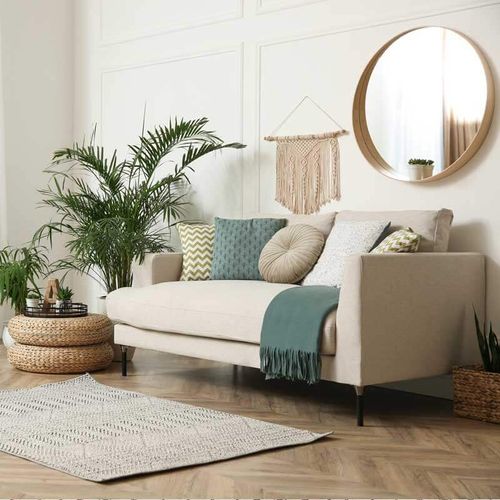Sofas are substantial investments that serve as focal points and centerpieces in living spaces for many years. But with regular daily use over time, sofas gradually accumulate wear and tear. So how long can you realistically expect a quality sofa to last in your home before needing to be replaced?
There are several key factors that determine the usable lifespan and longevity of a sofa. By selecting a well-constructed sofa, providing consistent care and maintenance, avoiding unnecessary damage, and watching for signs of expiration, you can maximize the years of service you’ll enjoy from your sofa before needing to shop for a replacement.

Sofa Quality Greatly Impacts Overall Durability
The quality of materials and construction methods used to manufacture a sofa will directly impact its structural durability and overall usable lifespan before deteriorating. Higher quality sofas made with strong hardwood frames, high-density foam cushions, and durable woven upholstery fabrics will typically last dramatically longer than cheaper sofas built with lower grade materials and construction shortcuts.
Characteristics of Quality, Durable Sofas Include:
- Hardwood internal frames using kiln-dried oak, maple or ash woods that resist warping, wobbling, and cracking over years of use.
- High-density polyurethane or latex foam cushions that resist compression and indentation, providing consistent comfort and support for over a decade.
- Tightly woven upholstery fabrics made of sturdy materials like microfiber, leather, or polyester blends that resist stains, tearing, pilling and fading even with regular use.
In Contrast, Cheaper Low-Quality Sofas are characterized by:
- Weaker softwood or particleboard internal frames that are prone to cracking, loosening and sagging after just a few years.
- Low-density polyurethane foam cushions that quickly compress and flatten, losing resilience and comfort.
- Lightweight upholstery fabrics that stain easily, stretch out, tear and pill rapidly with use.
Clearly, investing in a well-constructed sofa made with quality materials and manufacturing directly translates to many more years of usable life in your home before wear and tear necessitates replacement.

Expected Sofa Lifespans Based on Quality
Here are the general lifespan estimates you can reasonably expect based on the quality tier of your sofa:
- Budget or Bargain Sofas: 2-5 years of usable life before requiring replacement.
- Mid-Range Sofas: Approximately 6-8 years of usable life expectancy.
- Better Quality Sofas: 10-15 years of expected usable lifespan.
- High-End Luxury Sofas: 15-20+ years of usable life for most owners before a replacement is needed.
As shown, the quality of materials and manufacturing sets the baseline lifespan range, which can then be extended or reduced based on additional factors.
Key Factors That Can Shorten Sofa Longevity
While sofa quality determines the baseline durability and lifespan range, other factors can come into play that either extend or reduce a sofa’s usable years:
- Frequency of Use: Heavily used sofas that see near constant daily use will show signs of wear and expiration faster than lightly used sofas in more formal living areas. Spreading out use helps prolong lifespan.
- Care and Maintenance: Insufficient routine care such as vacuuming, spot cleaning spills, rotating cushions, and having upholstery professionally cleaned leads to faster deterioration and lifespan reduction.
- Kids and Pets: Rambunctious kids and pets jumping on the sofa, clawing at upholstery, and making messes will accelerate fabric damage and wear.
- Sun Exposure: Excess direct sunlight from nearby windows can cause premature fading and deterioration of leather and fabric upholstered over time.
- Improper Cleaning: Harsh cleaners, abrasive scrubbing, and excessive moisture during cleaning routines can damage delicate upholstery fabrics, shortening sofa lifespan.

Signs Your Sofa Has Exceeded Its Usable Lifespan
Watch for these clear indicators that your sofa has outlived its usable lifespan and reached the expiration point where replacement is likely needed:
- Permanent irregular lumps, sags, and depressions visible in the cushions from lost resilience.
- Extensive staining, discoloration, tearing, fraying, or development of holes in the upholstery fabric and leather.
- Splintering, cracks, and breakage beginning to show in the internal wooden frame.
- Loose, creaky joints between cushions and the frame that progressively get more wobbly.
- Strong musty odors that have become deeply embedded in the upholstery fabrics and resistant to removal.
- Insufficient support and uncomfortable lack of cushioning due to foam breakdown.
- An obviously dated style that looks glaringly out of place with your current décor.
Maximizing Sofa Lifespan Through Preventative Care
To optimize your sofa’s usable lifespan and delay the need for replacement as long as possible:
- Select the highest quality, most durable sofa your budget allows.
- Vacuum cushions and upholstery weekly to prevent dirt and debris buildup.
- Rotate and fluff cushions frequently to distribute wear and compression evenly.
- Professionally deep clean upholstery every 1-2 years to revitalize fibers and remove embedded dirt.
- Immediately spot clean spills to prevent permanent staining.
- Repair minor rips or damage as soon as possible to avoid further deterioration.
- Use furniture covers or keep sofa out of direct sunlight to prevent premature fading.
- Discourage kids and pets from jumping on or clawing at the sofa.
With proper preventative care and maintenance applied consistently throughout its life, a quality sofa should serve your household well for 10-15 years or more before requiring replacement.
